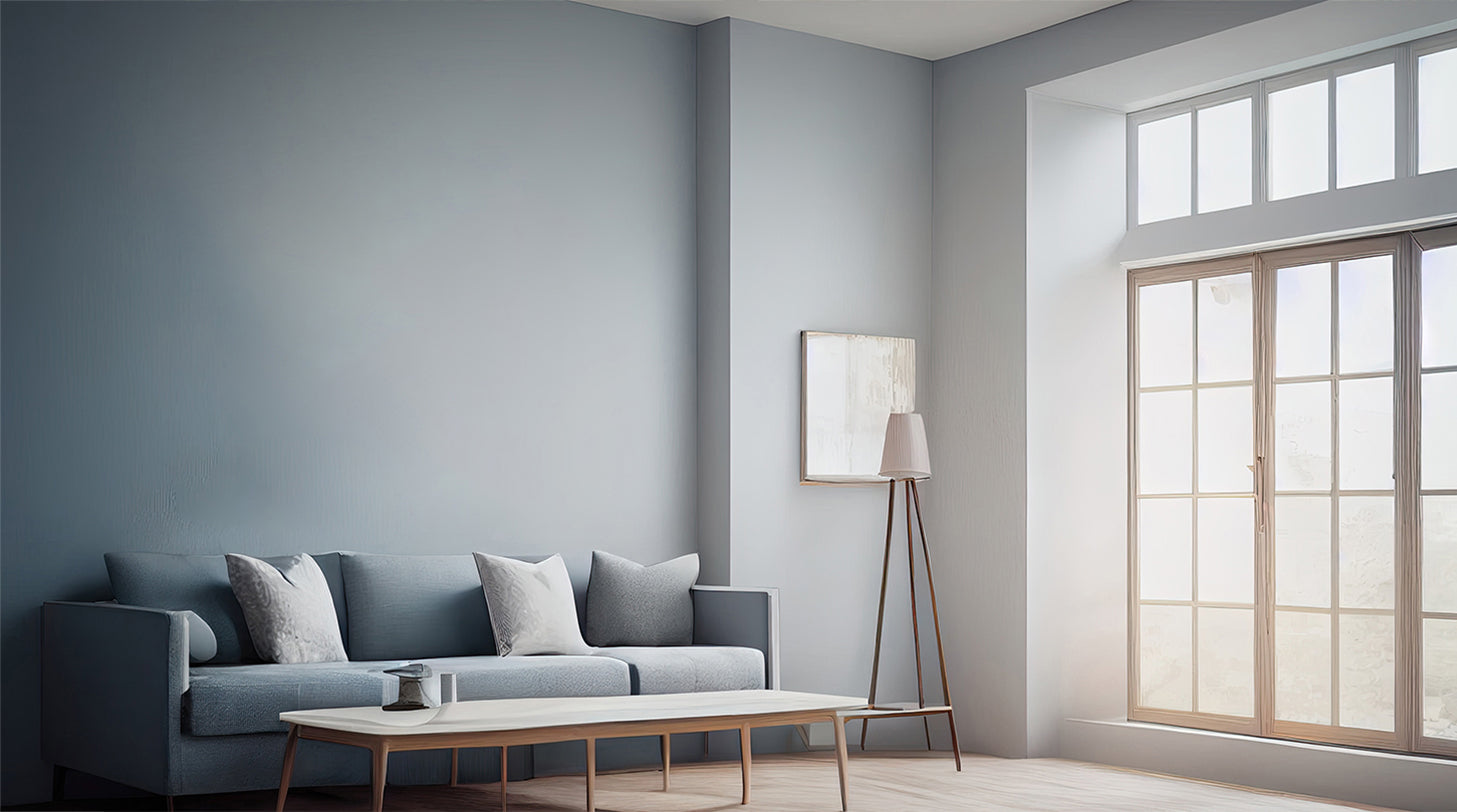What does relative humidity mean? What effects does a value that is too high or too low have and how can you regulate the water content in the air? Here you can find out everything you need to know about humidity in living spaces.
What does humidity mean?
Humidity is the proportion of water vapor in the air. The usual measure is relative humidity, which is given in percent. This describes the ratio between the actual amount of water vapor in the air (= absolute humidity) and the maximum possible (= maximum humidity). Relative humidity depends on the temperature, among other things: warm air can absorb more water vapor than cold air[1,2]. A value of 50% at 20 °C means that the air is 50% saturated with water vapor at a given temperature. If the temperature rises, the relative humidity falls and vice versa.
What humidity is optimal in which room?
The room climate is influenced by temperature and humidity. On average, a relative humidity of 50% and a room temperature of 20 °C have proven to be effective. However, the values vary from room to room:
Living room or study: A humidity of between 40% and 60% is considered optimal. The comfortable temperature is around 20 °C.
Bedroom: Here, too, a relative humidity of between 40% and 60% is acceptable. However, with the window closed, it can be lower, as breathing out releases a lot of water vapor overnight. In order to sleep well, the room temperature should be lower than in the other living rooms - around 18 °C.
Kitchen: Cooking creates condensation, which usually increases the humidity somewhat. The optimal values are therefore between 50% and 65%. Here, too, the room temperature can be a little lower.
Bathroom: This is where the humidity is highest due to bathing and showering - it can be up to 70%. The room temperature should be around 23°C, which is significantly higher than in the other rooms, because this allows the air to store more water vapor.
Cellar: In old buildings in particular, there is usually high humidity and low temperature. Values of up to 65% humidity at a temperature of around 13°C are fine.
In summer, the values are naturally on the higher side. This can be explained by the fact that warm outside air transports more moisture than cold air. In winter, the opposite is true.
In principle, the relative humidity in rooms depends on what you do there (e.g. washing, cooking, breathing) and the prevailing temperature. In bathrooms and kitchens, values above the optimum are therefore completely normal at times. However, they should never fall below 30% or rise above 70% for a longer period of time.
Humidity in living spaces - impact on well-being and health
Air that is too dry has a negative effect on our organism. On the other hand, long-term humidity of over 70% promotes the formation of mold, as condensation settles on surfaces. This is also unhealthy - because mold spreads through invisible mold spores in the room air.
Measures - this is how you keep the humidity in every room optimal
Indoor air that is too high or too dry is usually caused by incorrect ventilation behavior. As a rule, you can regulate the humidity in the apartment well by ventilating appropriately:
The best time to ventilate is in the morning and evening.
In the warm months, you should keep the windows closed during the day because the outside air is hot and therefore humid.
As a general rule, do not ventilate when it is raining, because the humidity is particularly high here.
Proper ventilation means short bursts of ventilation. This means you open the window completely several times a day, but for a short time (approx. 5 to 15 minutes). This ensures that the air in the room is exchanged optimally.
Humidity in living spaces - impact on well-being and health
Optimal humidity in rooms is important for health and well-being and ensures a pleasant indoor climate. The air should neither be too dry nor too humid.
Air that is too dry has a negative effect on our organism. On the other hand, long-term humidity of over 70% promotes the formation of mold, as condensation settles on surfaces. This is also unhealthy - because mold spreads through invisible mold spores in the room air.
Measures - this is how you keep the humidity in every room optimal
Humidifiers are often used in winter to help alleviate the problems caused by dry air and maintain indoor air comfort and healthy air. Distillation humidifiers have fewer health risks than cold evaporation or ultrasonic humidifiers. Since the steam produced by the humidifier by heating to boiling point can kill microorganisms and other impurities in the water, efficient humidification can also further alleviate respiratory health and skin problems caused by dryness in autumn and winter, and effectively improve the respiratory health of people with respiratory sensitivity such as rhinitis.
Indoor air that is too high or too dry is usually caused by incorrect ventilation behavior. As a rule, you can regulate the humidity in the apartment well by ventilating appropriately:
The best time to ventilate is in the morning and evening.
In the warm months, you should keep the windows closed during the day because the outside air is hot and therefore humid.
As a general rule, do not ventilate when it is raining, because the humidity is particularly high here.Proper ventilation means short bursts of ventilation. This means you open the window completely several times a day, but for a short time (approx. 5 to 15 minutes). This ensures that the air in the room is exchanged optimally.







